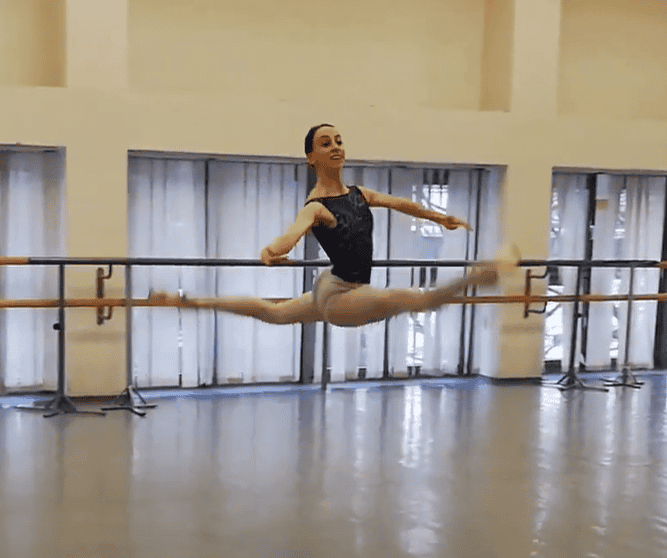Ballet Grand Jete – How to Perfect Your Technique
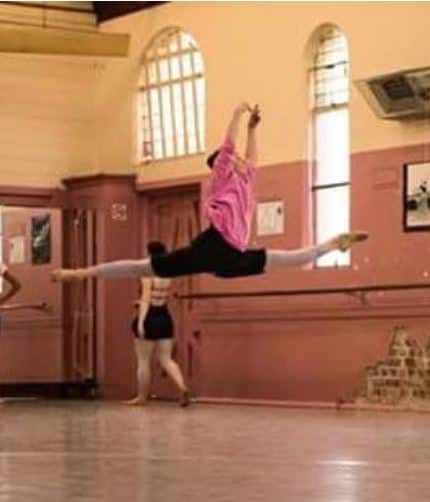
One of the most awe-inspiring aspects of watching dancers is their seemingly effortless ability to defy gravity, just like in a ballet grand jete.
While not the most complicated step in grand allegro, a grand jete still demands a perfect combination of flexibility, strength, and coordination.
It is a true testament of a dancer´s precision, control, and years of dedicated training.
In this blog post, I’ll provide you with beginner and professional tips to master your ballet grand jete technique.
WHAT IS A BALLET GRAND JETE?
A ballet grand jete is one of the most iconic and beautiful leaps in ballet, where dancers appear to soar through the air in a full split.
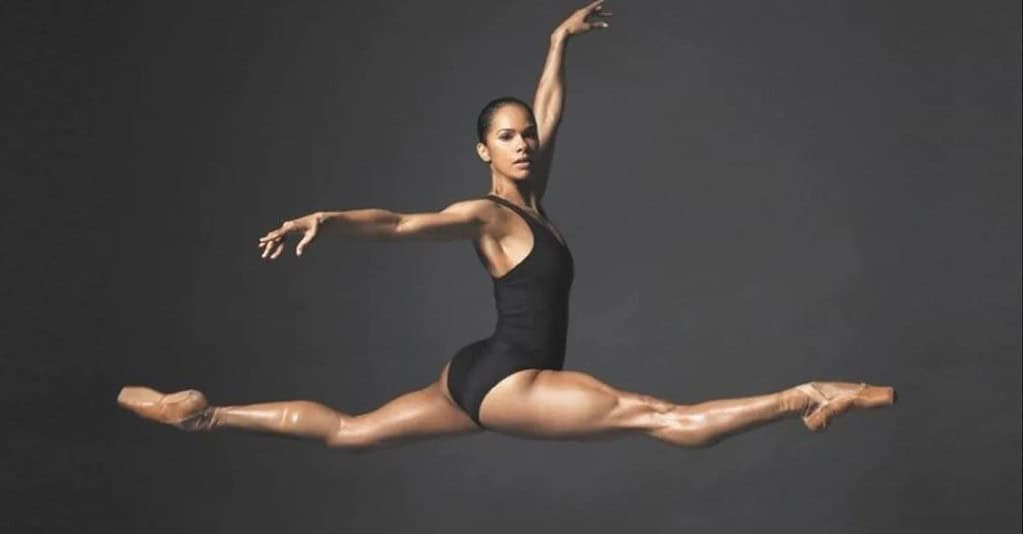
It’s a movement that exudes grace, power, and athleticism as dancers literally jump across the stage.
Achieving a perfect grand jeté requires not just flexibility but also strength, coordination, and proper technique from takeoff to landing.
While the grand jete may seem complex at first, once you find the right feeling and freedom in the air, it becomes less about difficulty and more about timing and coordination.
COMMON MISTAKES
Here are three common ballet grand jete mistakes that can be easily avoided with practice and precision.
BENT LEGS AND FLOPPY FEET
The first common mistake during a ballet grand jete is when dancers fail to fully extend their legs while in the air.
This not only diminishes the aesthetic quality of the leap but often results in a ‘floppy’ front foot, breaking the clean line of the jump.
When the legs aren’t fully stretched, the muscles can’t properly engage and lengthen.
This then compromises both the height and form of the jump.
NOT CONTROLLING THE LANDING
The second common mistake is when dancers fail to control their landing.
Just like the preparation, the landing is equally important as it provides the shock absorption needed when descending from a significant height.
A controlled landing not only enhances the overall aesthetic but also prevents the body from collapsing.
It’s important to:
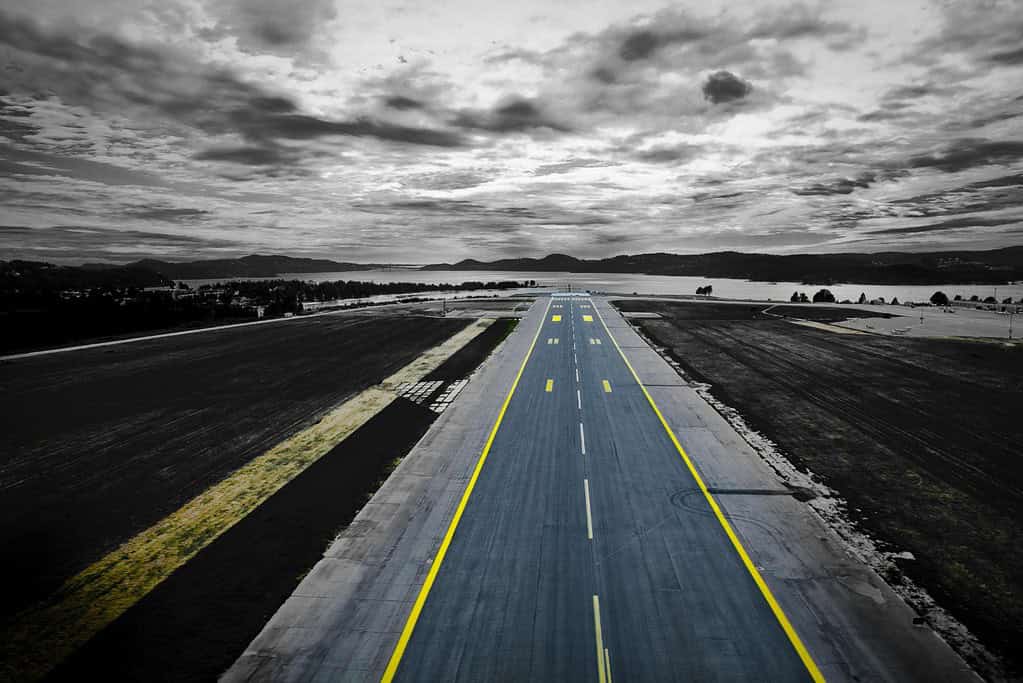
NOT PUSHING THROUGH THE FRONT FOOT
The third common mistake is not pushing through the front foot which is essential to achieve maximum power and lift in a grand jete.
It’s common to see dancers lift their heels instead of pressing through the entire foot, from the heel to the toes.
Unfortunately this can significantly reduce the power and elevation in your leaps.
For greater height and distance in your grand jete, it’s crucial to maintain even pressure in your feet.
This helps to engage the strength from your foot all the way up to your glutes, enabling a more powerful and controlled leap.
TIPS FOR BEGINNER DANCERS
Here are three tips for beginner dancers to incorporate into your daily practice to achieve the correct ballet grand jete technique.
TIP 1 – OVERSPLIT
To help achieve the ideal 180-degree split in a grand jete, I recommend you aim for a slight oversplit by incorporating specific stretching exercises into your routine.
Using a slight ledge, foam roller, or even a low platform to stretch can increase your flexibility beyond just a flat split.
When you’re in the air, gravity naturally pulls your legs down.
So if you can train your body to go slightly beyond 180 degrees, you’ll likely hit a perfectly flat split in the air during your leap.
This oversplit training can give you the edge needed for a visually stunning grand jete, ensuring that even with gravity’s effects, you maintain a clean, extended line.
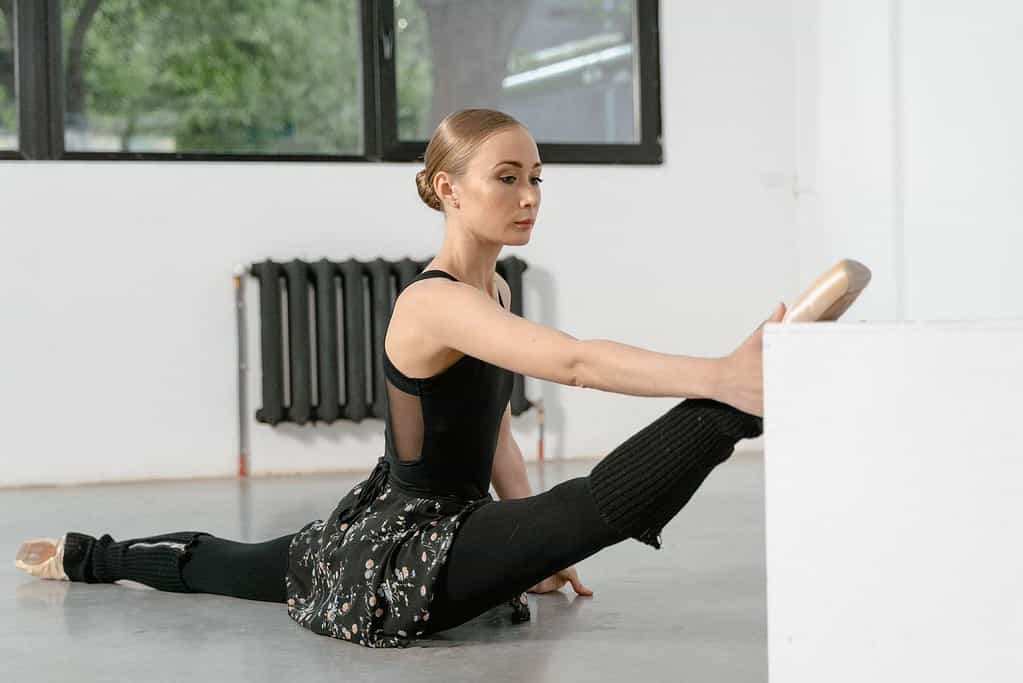
RECOMMENDATION
Begin by gently stretching in front splits on both sides, focusing on gradually increasing the height of the surfaces where you rest your front and back legs.
You can vary your stretches by targeting only the front leg, the back leg, or elevating both legs slightly to deepen the stretch.
This gradual approach will enhance your flexibility and improve the overall height and extension in your grand jete.
As your flexibility improves, so will your split position in the air.
However, always listen to your body-never push through pain. Stretching should feel challenging, but not painful.
TIP 2 – FRONT LEG HEIGHT
Favouring one leg in a grand jete is quite common but this can prevent the leap from achieving that perfect split position that defines this beautiful movement.
To get the iconic split leap look, you need to ensure both legs are reaching their full extension.
Often, dancers struggle more with the front leg, as it requires more speed and power than the back leg to achieve the desired height.
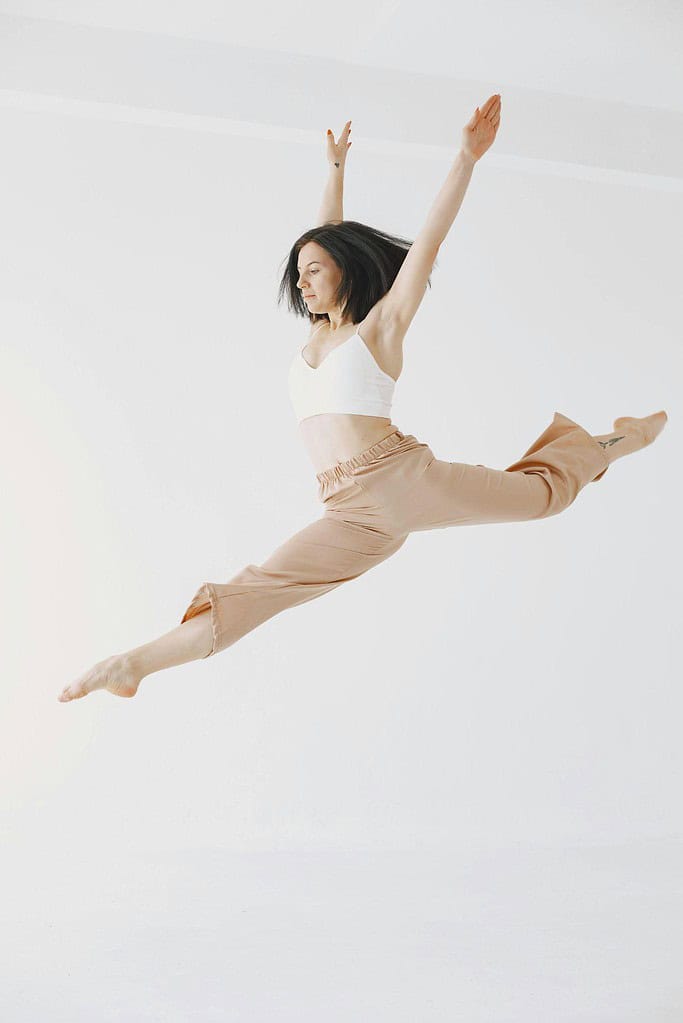
RECOMMENDATION
One effective way to practise this is by using a barre or two stable chairs for support.
Stand between them, press down on the barre or chairs with your arms, take a preparation step, and quickly open both legs into a grand jete position.
Focus on developing speed, particularly with the front leg, aiming to get the front foot up to barre height.
Think of the action as more of a sharp, fast kick than a slow, controlled developpe.
This drill helps build the muscle memory needed to replicate the correct timing and coordination in the centre without sacrificing the look of a clean, balanced split leap.
TIP 3 – SPEED
Unfolding from the knee is key to achieving a flat 180-degree position in the air during a grand jete.
Rather than slowly developing the leg, you need to think of it as a fast, sharp kick to ensure your knee remains high and lifted throughout.
Instead of dropping the knee and then extending the leg, focus on keeping the knee lifted, allowing the lower part of the leg to extend upward even more.
RECOMMENDATION
For building speed and maintaining knee height, practice step kicks to the front, focusing on quick, sharp movements and keeping the knee elevated at all times.
TIPS FOR ADVANCED DANCERS
Here are three tips for advanced dancers, that build on the basic principles of a ballet grand jete, that can be incorporated into your daily practise to perfect this movement further.
TIP 1 – BUILD STAMINA IN YOUR LEGS
Repeating multiple grand jetes in succession is an excellent way to develop the strength and endurance necessary to maintain consistency in your jumps.
After three or four consecutive jumps, you’ll likely notice a decrease in height and precision compared to your first leap.
That’s why it’s important to build the stamina in your legs, to increase your ability to sustain both height and proper form over time.
This will then allow you to perform with energy and precision throughout longer combinations.
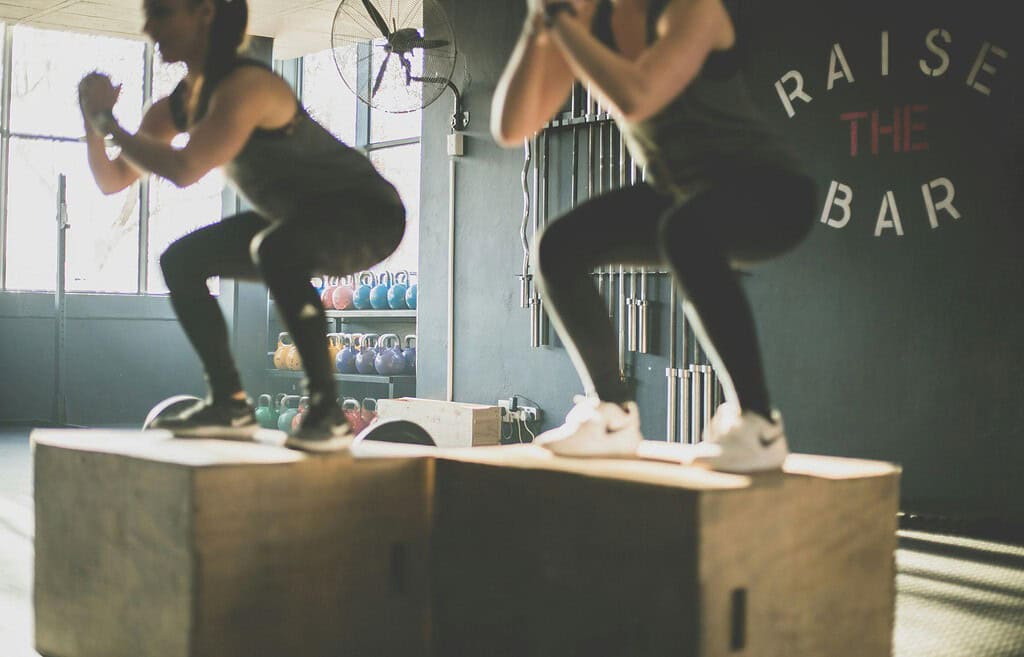
RECOMMENDATION
To build stamina in your legs, practice performing grand jetés in a row across the diagonal of the studio.
Try to maintain the same height and position in each grand jeté as in your first jump.
While this can be challenging, with consistent practice and focus, you’ll eventually be able to achieve this.
Aim to land with control and precision after each leap, using your plie to regain strength and momentum for the next jump.
Over time, your body will adapt, allowing you to sustain the same energy and dynamic form throughout a sequence of consecutive grand jetes.
TIP 2 – USE YOUR ARMS
The use of your arms can actually help you achieve a better grand jete position, in terms of suspension and appearance.
By keeping your arms in front of you and reaching forward during a grand jete, you can help lift and propel your body upward.
If your arms fall behind you, your body weight won’t transfer forward properly, making it harder to achieve a smooth, flowing leap.
Similarly, if your arms aren’t lifting upward, you’ll feel heavier during the jump, reducing your height and lightness.
RECOMMENDATION
A good way to practise using your arms correctly is by focusing on having your arms reach the final position slightly before your legs.
Keeping them there longer than you might expect creates the illusion of jumping higher and staying suspended in the air.
It’s also much easier to jump when your arms and legs are working together in harmony.
TIP 3 – IT’S ALL ABOUT THE PREPARATION
The preparation for a grand jete is as crucial as the leap itself, setting the foundation for a strong, controlled jump.
Your launchpad needs to be precise and energetic.
Start with a powerful plie and correct alignment to gather the strength for an explosive push-off.
Engage your glutes, hamstrings, and calves while maintaining your turnout to maximise your jump.
RECOMMENDATION
Many dancers, especially beginners, find that practising grand jetes with a gallop preparation is particularly beneficial.
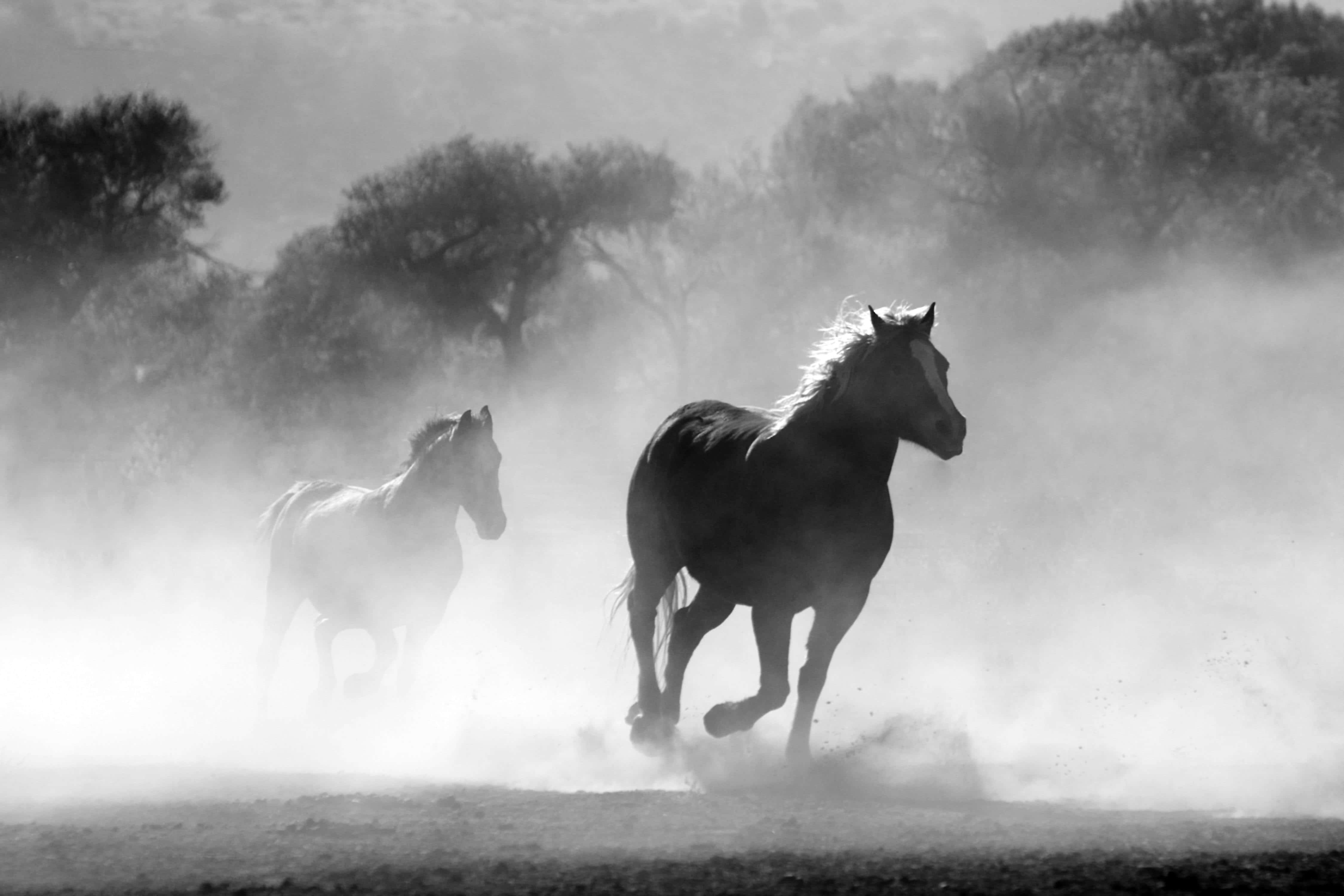
This method provides the speed and momentum needed for an explosive leap, establishing a fluid motion that builds the drive to push off the floor powerfully.
In contrast, traditional temps bas or pas de bourree preparations, while elegant (and more commonly used in choreography), may not generate the same explosive energy for those still mastering the jump.
Starting with a gallop allows dancers to focus on maximising elevation and extension in the air, eventually progressing to more complex preparations as their technique improves.
WRAP UP
As you work to improve your grand jete, remember the two crucial aspects:
Achieving an impressive split requires flexibility, while simultaneously building power and strength.
Once you’ve mastered both the split and the height, the grand jete becomes primarily about timing (ie. coordinating your plie, takeoff, and reaching full extension in the air).
With dedicated practice, you’ll develop that effortless, suspended feeling, allowing your grand jete to appear graceful and fluid.
Keep focusing on these elements, and you’ll see significant improvements!
